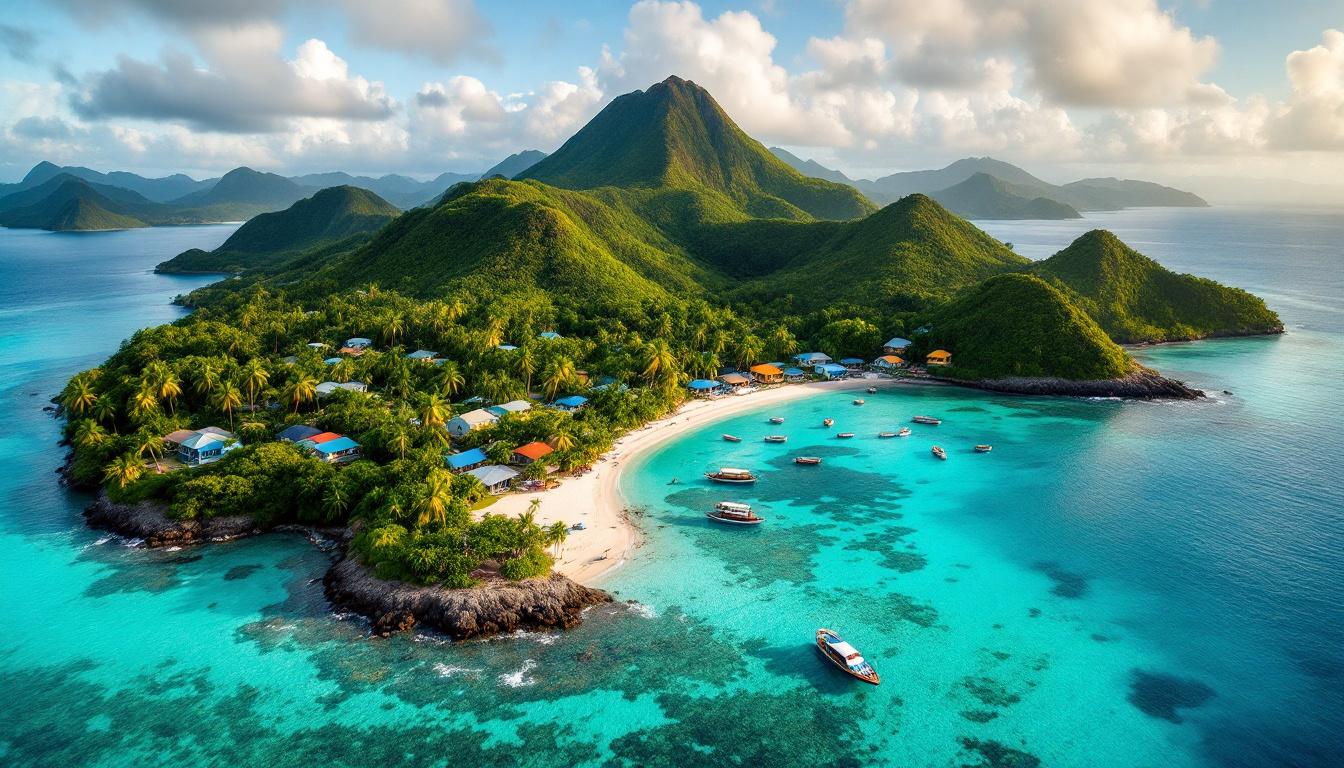When I first heard local fishermen in San Andrés whisper about their ancestral homeland across the waves, I knew I had stumbled onto something extraordinary. The Raizal people don’t just visit Providencia – they call this 17-square-kilometer Caribbean jewel “home” with a fierce protectiveness that has kept it hidden from the cruise ship crowds destroying nearby islands.
This isn’t another overhyped Caribbean paradise. This is Old Providence, where 5,000 Raizal guardians have spent generations protecting what UNESCO recognized as part of the world’s third-largest coral reef barrier. Their Creole whispers carry secrets that no guidebook will ever capture.
The moment my small plane descended toward this mountainous speck in the Caribbean Sea, I understood why locals guard it so jealously. Providencia rises 360 meters from turquoise waters, smaller than Manhattan’s Central Park yet harboring cultural treasures and natural wonders that put Bali and the Maldives to shame.
The island locals refuse to share with mass tourism
Raizal cultural guardians maintain strict protection
The Raizal Afro-Caribbean community has implemented building codes so strict that concrete hotels and chain restaurants remain banned. Walking through the island’s single village, I witnessed something unprecedented – a Caribbean destination where traditional wooden houses painted in brilliant blues and yellows still line unpaved roads, where reggae drifts from porches where elders speak their melodic Creole English.
Access limitations preserve authentic character
Reaching Providencia requires determination that casual tourists lack. The only access comes via 20-minute flights from San Andrés or a choppy catamaran journey that many abandon halfway. This natural filtering system ensures that those who arrive truly appreciate what they’ve discovered – a functioning Caribbean community rather than a resort playground.
What makes this tiny island worth the journey
The world’s third-largest barrier reef system
Beneath Providencia’s crystal waters lies the Seaflower Biosphere Reserve, a 300,000-square-kilometer marine sanctuary that divers rank among the planet’s most pristine. Local dive masters like those at Sirius Dive Shop guide visitors through coral gardens where nurse sharks glide past walls of brain coral untouched by bleaching or tourist damage.
Mountain peaks create dramatic Caribbean landscapes
Unlike flat resort islands, Providencia’s volcanic peaks create microclimates and hidden valleys that harbor endemic species found nowhere else. The challenging hike to El Pico summit rewards adventurers with 360-degree views across the Caribbean, where you can spot Nicaragua’s coastline on clear days while tropical birds call from the canopy below.
Authentic experiences impossible to find elsewhere
Raizal culinary traditions passed down generations
In family restaurants like La Abuela, Raizal grandmothers prepare coconut rice and whole fried snapper using recipes unchanged since their ancestors arrived centuries ago. These aren’t tourist performances – they’re genuine cultural experiences where locals share tables with visitors, teaching Creole phrases between bites of the freshest lobster I’ve tasted anywhere in the Caribbean.
Traditional fishing methods still practiced daily
Every dawn, wooden boats called “pangas” leave Providencia’s protected harbor using navigation techniques passed down through oral tradition. Joining these artisanal fishing expeditions reveals how the Raizal community maintains sustainable practices that have preserved their marine environment for generations while nearby islands struggle with overfishing.
Why visiting now supports cultural preservation
Post-hurricane recovery emphasizes community tourism
Hurricane Iota destroyed 98% of Providencia’s infrastructure in 2020, but the rebuilding process has strengthened the community’s commitment to small-scale, culturally sensitive tourism. Staying in local guesthouses and hiring Raizal guides directly supports families rebuilding their ancestral homeland according to traditional values rather than resort developers’ profit margins.
Limited seasonal windows protect fragile ecosystems
The optimal visiting season from December through April coincides with sea turtle nesting and coral spawning cycles that the community carefully monitors. This natural timing ensures that tourism supports rather than disrupts the biological rhythms that have sustained this ecosystem for millennia.
When Raizal elders speak of Providencia as “home,” they’re describing something more precious than any resort experience. They’ve created a living museum where Caribbean culture thrives authentically, where the third-largest coral reef system remains pristine, and where travelers discover what the Caribbean looked like before cruise ships arrived.
This tiny island’s greatest treasure isn’t its UNESCO status or dramatic landscapes – it’s a community that chose cultural preservation over tourist dollars, creating the Caribbean’s most authentic destination in the process.
Planning your authentic Providencia experience
How do I reach Providencia from the United States?
Fly to San Andrés via Bogotá, then take a 20-minute flight to Providencia. Satena Airlines operates daily flights, but booking early is essential as planes hold only 19 passengers.
What’s the best time to visit for cultural experiences?
Visit between December and April for optimal weather and the annual crab migration in April, when locals celebrate traditional harvesting festivals that welcome respectful visitors.
How can I support the Raizal community during my visit?
Stay in family-run guesthouses, eat at local restaurants, and hire certified Raizal guides for diving and hiking. Avoid bringing outside food or products that compete with local businesses.
Is Providencia suitable for families with children?
The calm waters and strong community values make Providencia excellent for families, though the remote location requires careful planning for medical needs and limited dining options may challenge picky eaters.
What should I know about Raizal culture before visiting?
Learn basic Creole greetings, respect photography restrictions around homes and people, and understand that Sunday is reserved for family and church activities throughout the island.
